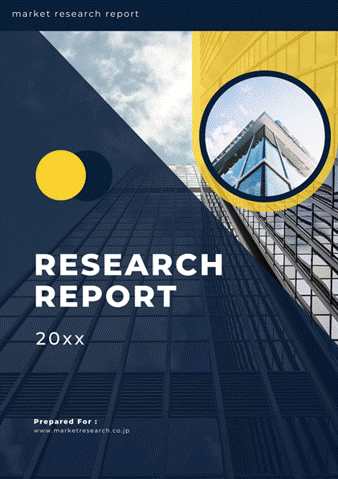 | • レポートコード:D0-MOR-AP1132 • 出版社/出版日:Mordor Intelligence / 2020年3月 • レポート形態:英文、PDF、120ページ • 納品方法:Eメール(受注後2-3営業日) • 産業分類:化学品および材料 |
| Single User | ¥629,000 (USD4,250) | ▷ お問い合わせ |
| Team User | ¥703,000 (USD4,750) | ▷ お問い合わせ |
| Corporate License | ¥1,110,000 (USD7,500) | ▷ お問い合わせ |
• お支払方法:銀行振込(納品後、ご請求書送付)
レポート概要
| 本調査レポートは、繊維染料の世界市場について調査・分析した資料で、繊維染料の市場概要、動向、セグメント別市場規模、地域別分析、競争状況、企業情報、市場機会分析などで構成されています。 |
The market for textile dye is expected to grow at a CAGR of over 4% globally during the forecast period. Growing demand from the apparel industry is driving the market. On the flip side, stringent environmental regulations are hindering the growth of the market.
– The textile dyes market is expected to grow during the forecast period owing to the increasing demand from the apparel industry.
– Asia-Pacific region is expected to dominate the market across the globe with the largest consumption from countries such as India and China.
Key Market Trends
Increasing Demand from the Apparel Industry
– Textile Dyes are widely used as colorants in the apparel industry and is expected to be the fastest-growing market during the forecast period.
– Dyes are used for coloring the fabrics. Dyes absorb and reflect light at a specific wavelength which gives the human eye a sense of color. Dyes impart beauty to the fabrics.
– With the increase in penetration of the internet, consumers are now looking for easy shopping, better offers, and easy return policies. The growth in online sales has contributed to the growth of the apparel industry.
– Nowadays, clothing has become a symbol of aspiration, personality, and status. The consumers have shifted from need-based to aspiration-based clothing. The demand for aspiration clothing has increased which is expected to drive the textile dyes market.
– However, synthetic dyes are harmful to the environment as they are not biodegradable and require a lot of water during their manufacturing. Stringent environmental regulations are impacting the manufacturing of synthetic dyes.
– The increasing demand from the apparel industry is expected to drive the growth of the market for textile dyes.
Asia-Pacific Region to Dominate the Market
– Asia-Pacific region is expected to dominate the market for textile dyes during the forecast period due to an increase in demand from countries like India and China.
– Textile dyes are mainly used as colorants for fabric in apparel and household textiles. The population in India and China combined is about 40% of the global population. The growing population is expected to drive the demand for clothing which propels the market for textile dyes during the forecast period.
– As per the Ministry of Textiles annual report 2018-19, India’s textile industry contributes to 7% of industry output in value terms, 2% of India’s GDP and 15% of the country’s export earnings.
– As stated by the National Development and Reform Commission, Domestic sales of apparel and knitwear in China stood at around USD 172.4 billion for the first 11 months of 2019, representing a 3% increase year-on-year.
– The aforementioned factors, coupled with government support, are contributing to the increasing demand for textile dyes market in the Asia-Pacific region during the forecast period.
Competitive Landscape
The global textile dye market is partially fragmented with players accounting for a marginal share of the market. Few companies include Huntsman International LLC., Vipul Organics Ltd., DEV COLOURS, DyStar Singapore Pte Ltd. and Archroma.
Reasons to Purchase this report:
– The market estimate (ME) sheet in Excel format
– 3 months of analyst support
1 INTRODUCTION
1.1 Study Assumptions
1.2 Scope of the Study
2 RESEARCH METHODOLOGY
3 EXECUTIVE SUMMARY
4 MARKET DYNAMICS
4.1 Drivers
4.1.1 Growing Demand from Apparel Industry
4.1.2 Other Drivers
4.2 Restraints
4.2.1 Stringent Environmental Regulations
4.2.2 Other Restraints
4.3 Industry Value Chain Analysis
4.4 Porters Five Forces Analysis
4.4.1 Bargaining Power of Suppliers
4.4.2 Bargaining Power of Consumers
4.4.3 Threat of New Entrants
4.4.4 Threat of Substitute Products and Services
4.4.5 Degree of Competition
5 MARKET SEGMENTATION
5.1 By Dye Type
5.1.1 Reactive
5.1.2 Dispersive
5.1.3 Direct
5.1.4 VAT
5.1.5 Basic
5.1.6 Acidic
5.1.7 Others
5.2 By Fiber Type
5.2.1 Wool
5.2.2 Nylon
5.2.3 Cotton
5.2.4 Polyester
5.2.5 Viscose
5.2.6 Acrylic
5.2.7 Others
5.3 By Application
5.3.1 Apparel
5.3.2 Household Textiles
5.3.3 Industrial Fabrics
5.3.4 Others
5.4 By Geography
5.4.1 Asia-Pacific
5.4.1.1 China
5.4.1.2 India
5.4.1.3 Japan
5.4.1.4 South Korea
5.4.1.5 Rest of Asia-Pacific
5.4.2 North America
5.4.2.1 United States
5.4.2.2 Canada
5.4.2.3 Mexico
5.4.3 Europe
5.4.3.1 Germany
5.4.3.2 United Kingdom
5.4.3.3 Italy
5.4.3.4 France
5.4.3.5 Rest of Europe
5.4.4 South America
5.4.4.1 Brazil
5.4.4.2 Argentina
5.4.4.3 Rest of South America
5.4.5 Middle-East and Africa
5.4.5.1 Saudi Arabia
5.4.5.2 South Africa
5.4.5.3 Rest of Middle-East and Africa
6 COMPETITIVE LANDSCAPE
6.1 Mergers & Acquisitions, Joint Ventures, Collaborations, and Agreements
6.2 Market Share Analysis**
6.3 Strategies Adopted by Leading Players
6.4 Company Profiles
6.4.1 Akik Dye Chem
6.4.2 Archroma
6.4.3 Arihant Dyechem
6.4.4 Blendwell SA
6.4.5 Colosperse Dyes & Intermediates
6.4.6 Cosmonaut
6.4.7 DEV COLOURS
6.4.8 DyStar Singapore Pte Ltd
6.4.9 Gopal Chemicals
6.4.10 Huntsman International LLC
6.4.11 Jiangsu World Chemicals Co., Ltd
6.4.12 KeyColour
6.4.13 Kolorjet Chemicals Pvt Ltd.
6.4.14 MAHICKRA CHEMICALS LIMITED
6.4.15 Organic Dyes and Pigments
6.4.16 Robama
6.4.17 Vipul Organics Ltd.
7 MARKET OPPORTUNITIES AND FUTURE TRENDS
7.1 Development of Eco-friendly Textile Dyes
7.2 Other Opportunities